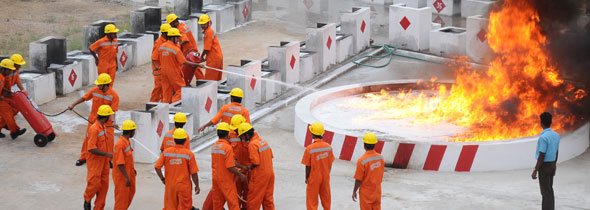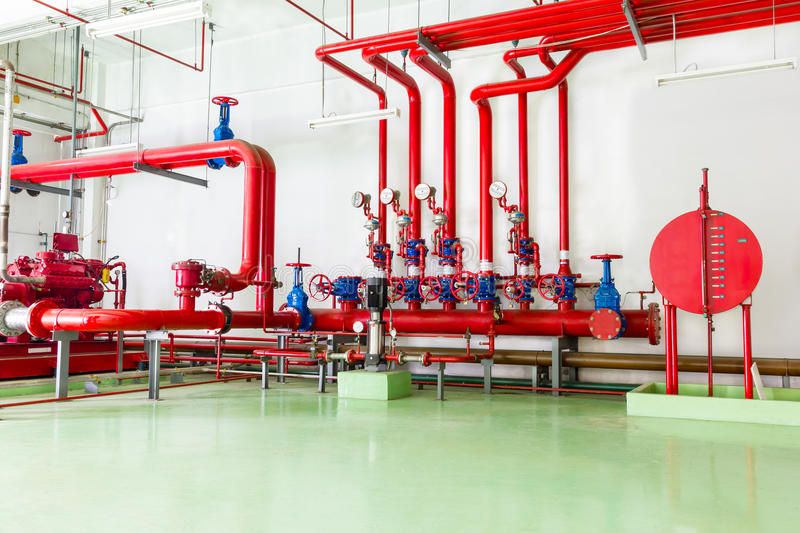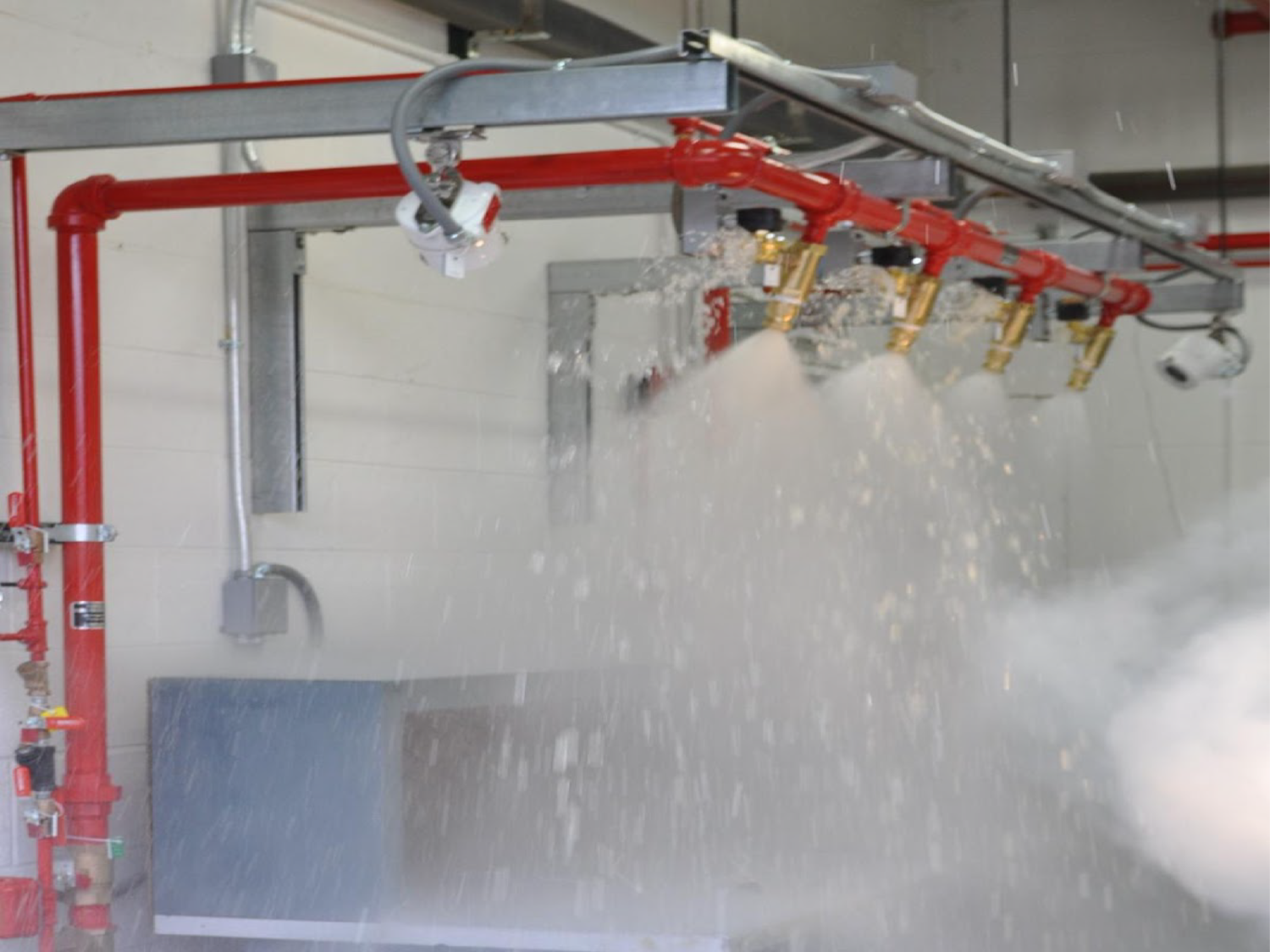
Fire Protection
Fire is a common risk in most facilities but the circumstances and potential impact of an occurrence varies with each property and are usually not known or appreciated until after an incident. Our safety audit will:
- CIdentify endangered zones exposing the risk features
- Provide appropriate loss prevention or mitigation recommendations
- Prescribe cost-efficient control measures and appliances suitable to the fire risk features in each zone. These may include fire alarms, smoke detectors, portable extinguishers, hose reel, dry/wet hydrant, drencher/water sprayers, water sprinkler, gas flooding protection etc.
- Include appropriate training for fire prevention and effective use of fire appliances.

Design, Installation & Upgrade of Fire Protection Facilities
Our Fire Protection Engineering Team will design, construct, install, test, commission and maintain the fire protection facilities. We will repair upgrade or revamp of existing systems. The statutory fire protection facilities include:
- Fire Alarms & Smoke Detectors
- Dry & Wet Hydrants
- Fire Pumps
- Portable Extinguishers.
- Hose Reels
- Water Sprinklers
- Water Storage Tanks
- Drenchers, Sprayers.
- Gas Flooding Systems for Electrical, Electronic & Computer Suites

Automatic Sprinkler Protection
Catastrophic fire losses involving fatalities, injuries, property damage and other severe consequential losses in residential apartments, offices, Educational institutions, hostels, warehouses, storage buildings, markets, shopping centres, commercial premises, care centres, clinics, hospitals, cinemas, theatres, high rise buildings, event centres, factories, public buildings and virtually all forms of occupancies have continued to occur in centuries in all parts of the world.
Sprinkler system is regarded worldwide as the most efficient and effective fire suppression intervention. Economic Benefits include:
- Unquantifiable losses from the dead and injured to company and family
- Reduced property damage
- Reduced business interruption (downtime, rebuilding, increased cost of working)
- Reduced job losses.
- Reduced adverse impact on client’s commitments & other supply chains
- Reduced cost of firefighting and investigations
- Water Storage Tanks
- Reduced cost of insurance
- Reduced risk of death and injuries
Social & Community Benefits include: